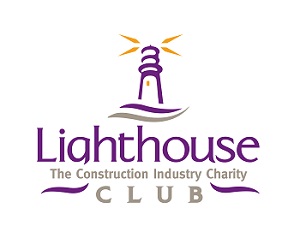Savills: Political uncertainty fails to dent Scottish residential market
Scotland’s residential market remains less affected by the political uncertainty impacting housing markets in London and the south, according to Savills latest analysis launched at their Scottish Property Outlook Conference held at the Edinburgh International Conference Centre yesterday.
An audience of 550 property professionals heard that Scottish house prices continue to increase year on year and the official UK Index for Scotland has seen positive annual growth for the last 34 consecutive months. Savills Research forecasts 18.2 per cent growth across Scotland over the next five years, compared to 14.8 per cent for the UK as a whole.

Faisal Choudhry
Savills forecast Scottish average house price growth of 18.2 per cent over the next five years, compared to 14.8 per cent for the UK as a whole.
Scottish prime transactions (above £400,000) increased by 7 per cent last year compared to 2017.
In Edinburgh the growth was 12 per cent.
Scotland’s £1 million-pound plus transactions reached 211 in 2018, the highest since 2008. Edinburgh’s million pound transactions reached 128 in 2018, which was the highest since 2007 and nearly 20 per cent more than 2017.
At 7 per cent, annual price growth in Edinburgh’s prime market at the end of last year was the highest in the UK according to the Savills Prime Residential Index.
Strong premiums and record prices per square foot continue to be achieved in Edinburgh.
The market above £800,000 across Greater Glasgow saw a remarkable performance, with 89 transactions in 2018, the highest since 2008. The majority took place in Glasgow’s West End and Park and also Pollokshields and Newlands in the southside.
Greatest growth in Savills sales activity has been in Glasgow, where viewing numbers are up by 15 per cent and sales agreed by 86 per cent.
The capital’s international profile and vibrant economy underpins its strong housing market. While some buyers are waiting for the political dust to settle, and despite an increase in the number of sellers, motivated buyers still outnumber sellers. Looking ahead, we expect a more stable and considered market in 2019, driven by realistic pricing.
The prime market (at £400,000 and above) continues to become increasingly active across Edinburgh’s inner suburbs. Ravelston was the stand-out area, with the number of transactions increasing by 44 per cent. Neighbouring Murrayfield increased by 20 per cent, supported by new build. Trinity, Inverleith, Stockbridge, Grange, Morningside and Merchiston were also star performers in the prime market.
Ben Fox, head of Savills Edinburgh said: “Savills Edinburgh currently has the highest rate of new enquiries per property of all Savills UK offices, over five times the national average. Around 40 per cent of our buyers come from outside Edinburgh, which is now a truly global city: with direct flights from China, the Middle East and the US, 12 per cent of our buyers come from all over the world.
“The Scottish market has been through the political mill over the last decade: uncertainty has been factored into our market and buyers and sellers have become resilient, many now simply needing to move on with life. With supply still relatively low, motivated buyers are prepared to offer premium prices to secure the right property.
“The market remains price sensitive. Edinburgh continues to offer value for money compared to other university cities: average values in Cambridge are now 43 per cent higher than they were at the peak of the market, while Edinburgh is just 4 per cent higher demonstrating how much our market has been held back by the additional uncertainty of independence and taxation in Scotland. While we’re expecting a more considered market this year, with slower growth than the past couple of years, I believe there is still room for significant growth for a while yet.”
Cameron Ewer, head of residential in Scotland, based in Glasgow, said: “Glasgow has experienced real economic growth and development in recent years, bolstered by a burgeoning young population, as well as rapid expansion of the high-tech and service sectors. Glasgow is the largest retail centre in the UK outside London and its music, food, sport and education confirms the city’s reputation as a highly desirable international destination and a great place to live and work. The fact that it offers good value for money compared with many other cities, including London and Edinburgh, is also a key factor driving demand.
“Our latest analysis of buyer activity reveals that the number of buyers registering with Savills Glasgow rose by 13 per cent compared with the same period last year, and viewing numbers are up by an enormous 15 per cent. But these viewers are not just window shoppers – they are committed buyers, with the number of sales agreed increasing by 86 per cent. In addition, the million pound market across Greater Glasgow recovered to the level prior to the introduction of Land and Buildings Transaction Tax. And the rising million pound sales trend continues with Savills Glasgow office already agreeing more million pound plus deals this year than the whole of last year.”
Faisal Choudhry, head of Savills Residential Research in Scotland, added: “Whilst it is less clear cut to predict what happens as Brexit negotiations become ever more complex, it is anticipated the Scottish market will remain stable. If Article 50 is extended for a relatively short period and we ultimately avoid a no-deal Brexit, households will have greater confidence over their future finances. This in turn should underpin buyer sentiment to support an improvement in house price growth in 2020.
“An extension to the delay of our withdrawal from the EU, and therefore further uncertainty, cannot be ruled out. As we have seen, Scottish buyers and sellers are proving themselves to be relatively resilient to this, with Land and Buildings Transaction Tax being a far bigger consideration for those transacting. Scotland still has room for price growth, particularly in popular, well-connected neighbourhoods. In many of these markets, supply falls well short of demand so competition will help drive up values.”





















